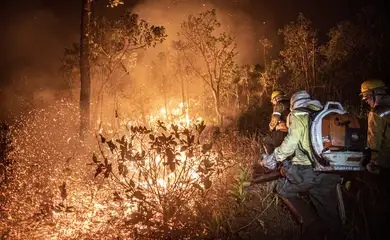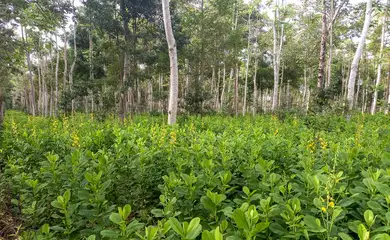Greenhouse emissions from fires in the Amazon surge by 60%

Fires in the Amazon from June to August this year resulted in greenhouse gas emissions 60 percent higher than in the same period last year. Research published by the Climate Observatory shows that the blazes emitted 31.5 million tons of carbon dioxide equivalent into the atmosphere.

The figure is said to be close to the total emitted by Norway in one year (32.5 million tons).
Ane Alencar, scientific director of the Amazon Environmental Research Institute (IPAM), which calculated the emissions in the Climate Observatory survey, pointed out that the data still fail to take into account the fires that occurred in September.
“The worst is unfortunately happening now, in September,” she said.
Of the 2.4 million hectares burned from June to August, 700 thousand were forests, the burning of which emitted 12.7 million tons of CO2 equivalent.
Delayed emissions
According to the survey, even after the fires are extinguished, emissions will continue for some years due to the decomposition of the burnt organic matter.
It is estimated that over the next decade, the vegetation destroyed by these fires will emit another 2 to 4 million tons of CO2 equivalent.
In addition to delayed emissions, fires also weaken forests and lead to even more intense fires in subsequent years.
“When the forest burns for the first time, it becomes more susceptible to other fires. The trees lose their leaves and fall over, smashing other trees. As a result, there is more combustible material on the ground. Hot air also enters the forest more easily. In short, it becomes more flammable. When the second fire comes, it’s more intense and emits a lot more [greenhouse gases],” Alencar said.
Marcos Freitas, coordinator of the Virtual Institute for Global Change (IVIG), linked to the Graduate Institute of Engineering at the Federal University of Rio de Janeiro, noted that fires in the Amazon cause more emissions because of the greater concentration of biomass in a given area.
“Other ecosystems—like the cerrado—end up having less biomass per hectare and therefore less CO2. In the Amazon, we’re looking at 250 to 300 tons of carbon per hectare,” she said. “Other colleagues are worried we’ll exceed 20 percent [of deforestation in relation to the total original area] of the [Amazon] forest and you’ll see an extremely high loss of evapotranspiration, causing the drought to increase,” she added.
Greenhouse effect
Greenhouse gases are gases that trap the Sun’s heat in the Earth’s atmosphere. The unit of measurement used for emissions is called CO2 equivalent because carbon dioxide is not the only one of these gases. Others—like methane (CH4) and nitrous oxide (N2O)—have even greater heat-trapping capacities, according to the Intergovernmental Panel on Climate Change (IPCC).
One ton of methane in the atmosphere, for example, is equivalent to more than 20 tons of CO2 in terms of heat retention over a period of 100 years—i.e. more than 20 tons of CO2 equivalent. In the case of one ton of nitrous oxide, the equivalent is almost 300 tons of carbon dioxide over 100 years.
The atmosphere is mainly made up of nitrogen (N2) and oxygen (O2), which account for more than 99 percent of the air’s composition, but have no heat retention capacity.
On the other hand, despite accounting for less than 0.1 percent of the atmosphere’s composition, greenhouse gases, along with water vapor, are capable of regulating the Earth’s temperature, raising it when their concentration rises or reducing it when their share of the atmospheric composition shrinks.
By throwing millions of tons of greenhouse gases into the atmosphere, fires are a counterbalance to the country’s efforts to reduce its emissions. IPAM’s scientific director pointed out that these 31 million tons will not even be counted in the greenhouse gas emissions inventory, as only fires related to deforestation aimed at transforming the soil cover or for sugar cane and cotton crops are required to be calculated.
“This needs to be taken into account, because the pressure on the ecosystem is so huge,” IVIG’s coordinator concluded saying.







